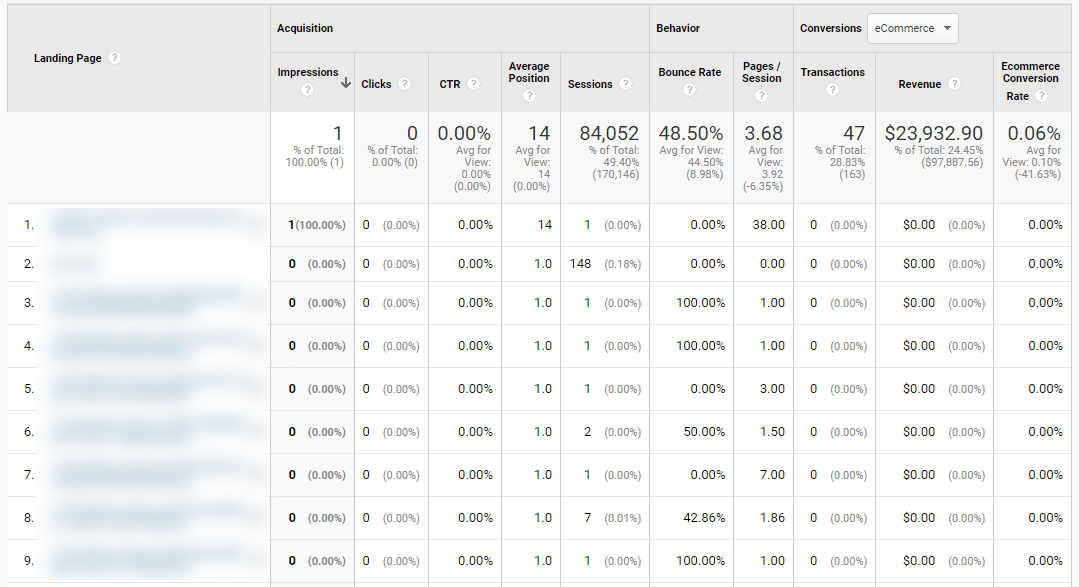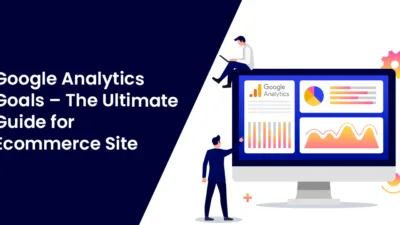Hello E-commerce Friends,
SEO is a functional way to drive traffic, build conversions and improve search engine rankings. You need to constantly measure your SEO performance in order to have close attention to what is working, what needs to be changed. SEO Analytics is the process of monitoring and analyzing your site data with the aim to increase organic traffic.
Google Analytics is a powerful tool to measure SEO performance and get insights on your every page and campaign. Looking at just the surface will not work. To improve your campaigns you need to deep-dive to the core of the insight reports.
Check these actionable Google Analytics Insights to improve your SEO strategy and campaigns.
Best 7 Useful Google Analytics Insights You Can Check to Improve SEO
Custom Segments
Custom Segments help you to get insights on customer behavior and how they engage with you. Segments allow you to track the traffic by channel, location, time spent on site, interest, type of device, and much more.
To create or explore the customer insights in Google Analytics, navigate to Audience > Overview to get the reports on all sessions.

To have a closer look, go to Demographics > Overview to get the data on Age and Gender of visitors. The following report shows most users are between 25-34 age and there are more female users compared to male.

Based on these insights you can create a new segment with +Add Segment to monitor the behavior of the users.
Track Mobile Traffic
Mobile commerce is increasing and monitoring mobile traffic is very important to gain understanding of user engagement levels.
Monitor the mobile conversions of the individual page by adding a segment for mobile traffic. Track the mobile bounce rates to know where you are lacking. Compare mobile and desktop bounce rates to obtain the difference of data between the mobile experience and desktop experience.

Emphasize on Search
Do you have a search bar on your website? It is important to know what people search for usually. Search Insights not only let you know what users are searching but also how many people are using the search bar.
You can look for the Search Analytics from Behavior > Site Search

If you find a large number of people using the search bar, it means you need to improve the navigation of your website as the users are not comfortable with it. If a user is searching for a term frequently and you do not have enough content related to it, adding the content is a good practice if it is relevant to your niche. If a user searches for a product or service frequently, you need to promote that product more and make it accessible from the homepage itself.
Focus on Bounce Rates
Bounce rate metrics are the percentage of people who visit your website but leave after viewing the page. There may be many reasons resulting in higher bounce rates of your site.
One of the reasons for poor bounce rates can be users cannot find what they were looking for. It may also happen when a person visits your site but it takes longer than usual to load the content. In this case, the user chooses not to wait and bounce back. Other than this, the website speed, UI/UX, and design are the culprit for higher bounce rates.
Determine from Google Analytics whether the bounce rates have increased or decreased. If it has increased significantly you need to find out what area needs updating.
Discover High Performing Pages
Knowing the insights with individual page performance helps you get better understandings of conversions. Navigate to Behavior > Site Content > Landing Page to acquire insights on various landing pages of your website.

If you find there is a decline in the conversion rate of any particular page, it means the issue is only with that one page. But if there is a decline in multiple pages, means there is any technical issue going through with your site.
Discover Low Performing Pages
Pages do not perform well all the time. Low-performing pages can affect the proportion of organic traffic and visibility. Navigate to Acquisition > Search Console > Landing Pages and select the time period to compare the data.

Sort the table and explore the data of a particular page for closer insights. If a page is receiving enough clicks but the click-through rate (CTR) is low, it means the page needs to be updated.
Big Picture of Conversions
Many times it happens that the user visits your website for the first time but does not convert. Then they again visit your website with Google search and convert as customers. It is very obvious that users do not convert for the first time. They again visit your website to make a direct purchase or have converted via social media.
Navigate to Conversions > Multi-Channel Funnels > Assisted Conversions and get more specific insights on your organic traffic.

Final Words:
Google Analytics has numerous reports and views. It takes time to understand the whole nine yards of Google Analytics and become familiar with the data and formats. I hope this guide has helped you start with Google Analytics and improve your SEO strategy.
Our Marketing team is updated with the latest Google Algorithms and can optimize your site to fix the outflows. Avail of Search Engine Optimization Service and be sweat-free with your website SEO.
If you found the article helpful, hit those 5 stars, and do not forget to share it with your friends.
Happy Reading








